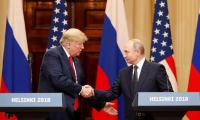It was the time to face the challenge. All philosophies of development were aimed at providing humanity with a better quality of life so the economic transformation of Pakistan was a vision of Quaid-i-Azam. Investing in the future through education, eradicate poverty and building infrastructure was the basic motive. Quaid-i-Azam was not an economist to discuss the details about the economic growth, inflation, current account deficit etc. However, the economic vision could be seen in his decisions, particularly when he joined the Muslim League as a politician. During his student life in England, Jinnah found the concept of equal economic opportunities quite impressive. He observed the significance of investing in future and dividends of equity from there. Jinnah was very clear that providing equity to people is more important than landing on the moon. Though people may not find any economic plan of the Muslim League but as a leader, Jinnah wanted Pakistan to emerge as a progressive and economically viable country that gives equal opportunities to all citizens. He belonged to a business family and was well aware of the benefits of a business and trade than finding just clerical jobs. Zawwar H. Zaidi a prominent author has referred that for him “commerce and trade are the life-blood of the Nation.”
The concept of development and welfare was manifested in his many speeches, press statements, and also referred in various studies. Khilji (2005) has broadly categorised Jinnah’s vision to be followed to build a welfare state:
(1) The government elected by the people will not allow landholders and capitalists to flourish at the expense of the masses.
(2) An economic system based on the Islamic concept of equality and social justice.
3) A major role of the public sector is the fair distribution of the resources between the haves and have-nots. If we take a look at economic planning for the last seven decades, we can find many economic plans since 1950.
The economic planners in the 1960s believed that growth can be assured through a conventional economic approach or trickle-down approach which suggests tax breaks and benefits are given to the industries, large businesses and corporations so that wealthy people earn more and its effects go down to everyone. With less regulation, laws, and tax cuts, these policies ultimately were criticised for adding more benefit for the richer and increasing inequality for the rest. As many as 43 richer families emerged out of this plan. This inequality was reflected in political unrest and later in political and economic development from the 1970s onwards. Simon Kuznets, a development economist mentioned that since economic growth increases, therefore initially inequality increases but with the state interventions, it can generate trickle-down effects. The economic planning of the 1970s was focused on the contrary, nationalization of the industries, termination of export bonus, removal of subsidies granted to the industries previously. Efforts were made to de-link financial capital and industries to ensure equitable distribution of income, but it did not work and resultantly two major economic sectors i.e. industrial and agricultural production declined. Public investment declined and government could not motivate domestic saving either, with declining GDP and the increasing saving-investment gap, economic inequality was revealed. Nevertheless, some studies show that there was a change in income inequality and comparatively it decreased in 1970. There was a continuity of denationalisation during the 1980s also, though the purpose was to get sustainable growth and reduce inequality. At the same time, it could be seen that agreements with IMF and World Bank meanwhile Pakistani currency was devalued by 20 % and started to adopt the policy of “Washington Consensus”.
The policy of privatization, deregulation and trade and financial liberalization continued under this consensus as by this time it was a debt burden economy and Pakistan has to implement further IMF stabilization program during the 1990s. The phenomena of the middle class started disappearing and the structural adjustment program of IMF was being implemented without human face adjustment. This was the period when economic inequality in urban and rural both rose to the highest as compared to previous decades.
During last one decade of 2000 onwards. Pakistan is experiencing “Stop-go” growth. The more liberal and outward-oriented economic policy has been followed in the decade of 2000s, however, there were certain pre-requisite for the implementation for these programs which the economic managers have not bothered about while wishing the path of recovery. In my view, the constraints of the traditional economic system and fragility of the low-income group created dual constraints to structural reforms of Pakistan which started in the 1990s and continued in 2000. Structural reforms with human face adjustment with high economic growth are pre-conditions which was missing. This provides the reforms to be implemented gradually to drive economic growth and phasing out the old system. It had to be balanced with short term and long term programs to harmonise with the growth and economic equality objectivity. The earthshaking impact of the privatisation particularly of the power sector was avoidable which we now witness in the giant impact of circular debt. There was always caution against such adjustment and reforms though.
The present state of poverty shared by Pakistan National Human Development Report 2020, as per the recent data the poorest 1 per cent of the population, who hold only 0.15 per cent of the national income, compared to the richest 1 per cent, whose share of national income exceeded 9 per cent in 2018-2019... the income of the richest 10 per cent of Pakistan’s population is over 30 per cent more than that of the total income of the poorest 40 per cent of the population. Resultantly the middle class is squeezing in Pakistan which makes 42 per cent share of Pakistan population as per estimate 2007-08. This share of the middle class is declined to 36 per cent by the year 2018-19, implying that the middle class is increasingly being ‘squeezed’.
Taking a glance at Pakistan’s economic policy vis-ˆ-vis promoting equality a rough sketch of the Pakistan economic plans shows that Pakistan has struggled to develop a sustainable economic plan for the structural transformation. Five years of economic plans starting from the 1950s to 2025, developed a growth and development strategy, however, distinctive features of the economic transformation were not properly addressed by the economic planners of Pakistan and none of the core features of the Quaid-i-Azam’s economic vision were closely bridged. Currently, economic inequality is rising critically. There is a great potential for growth with equal opportunities, and real worth is its people. We are facing two different Pakistans in terms of equality. We need to map out an economic vision with more of an equality impact to attract foreign investors. It will help in promoting the institutional-based transformation of the economy. Pakistan needs to adhere to the Quaid’s vision of growth as well as global commitments such as SDGs, to emerge as a real welfare state.
-The writer is a Political economist and winner of prestigious Martin Luther King Award, United States.







